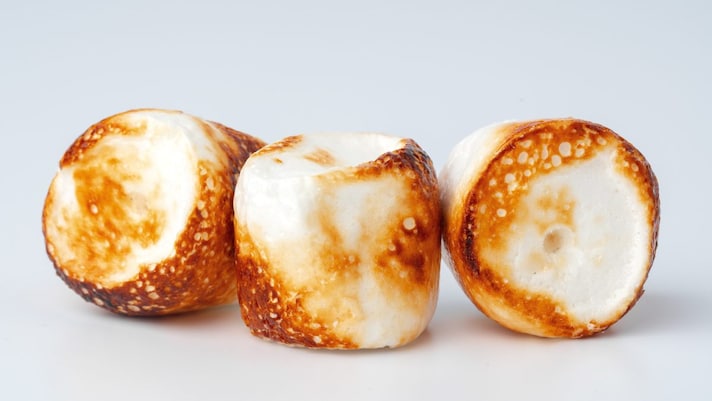What’s The Science Behind Marshmallows Roasting and Melting Over Campfires?
Roasting marshmallows over a campfire transforms them from jiggly to gooey through caramelization and melting gelatin. The heat causes sugars to caramelize and gelatin to lose structure, creating a golden crust and molten interior.

One of the best parts of summer, whether you're camping, at a summer camp, or even on the beach, is gathering around bonfires with friends, laughter, music, and, of course, roasted marshmallows. Whether enjoyed in s'mores or simply on a stick, have you ever looked at a marshmallow and wondered how it transforms from its jiggly consistency to that gooey, delicious texture? Let’s delve into the science behind this tasty transformation.
The Melting Magic: What’s Happening?
When a marshmallow melts over a fire, it undergoes a process called caramelization. As the marshmallow heats up, the sugars within it start to break down, leading to a change in color and flavor. This process begins at around 320°F (160°C), when the marshmallow starts to brown, creating that perfect golden crust. Additionally, the gelatin and other ingredients in the marshmallow begin to melt and soften, giving it that gooey texture we all love.

The Science Behind the Gooey Transformation
The science behind this transformation involves both caramelization and gelatin melting. Marshmallows are primarily made of sugar, water, and gelatin. When exposed to heat, the water inside the marshmallow evaporates, causing the gelatin to lose its structure and the sugars to caramelize. This is why marshmallows become sticky and gooey when roasted. The gelatin, which gives marshmallows their springy texture at room temperature, melts and mixes with the caramelized sugar, creating a molten, delicious mess. This combination of melting gelatin and caramelized sugar is what gives roasted marshmallows their unique, irresistible texture.
Tips for the Perfect Roasted Marshmallow
Achieving the perfect roasted marshmallow requires some finesse. Start by choosing the right utensil – a long, heat-resistant stick or metal skewer is ideal. Hold the marshmallow over the fire, but not directly in the flames. The best technique is to find a spot where the heat is intense enough to melt the marshmallow slowly but not so hot that it burns it instantly. Rotating the marshmallow ensures even cooking and helps avoid burning one side while leaving the other side untouched. Patience is key – a perfectly roasted marshmallow takes time to develop a golden-brown crust on the outside while remaining gooey on the inside. Think of it as a dance with the flames – a little patience and the right moves will lead to a perfect treat.
;Resize,width=767;)
;Resize,width=712;)
;Resize,width=712;)

